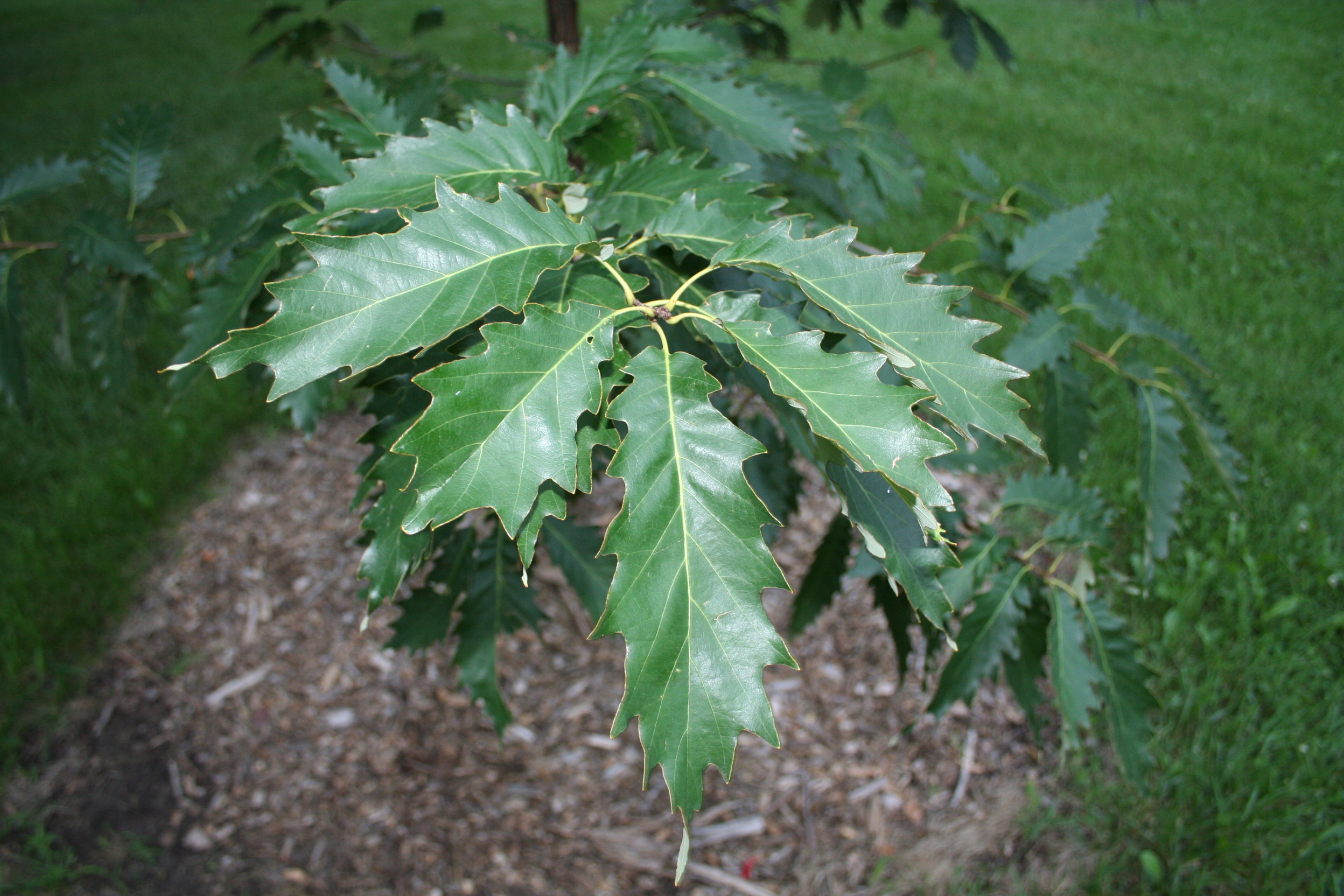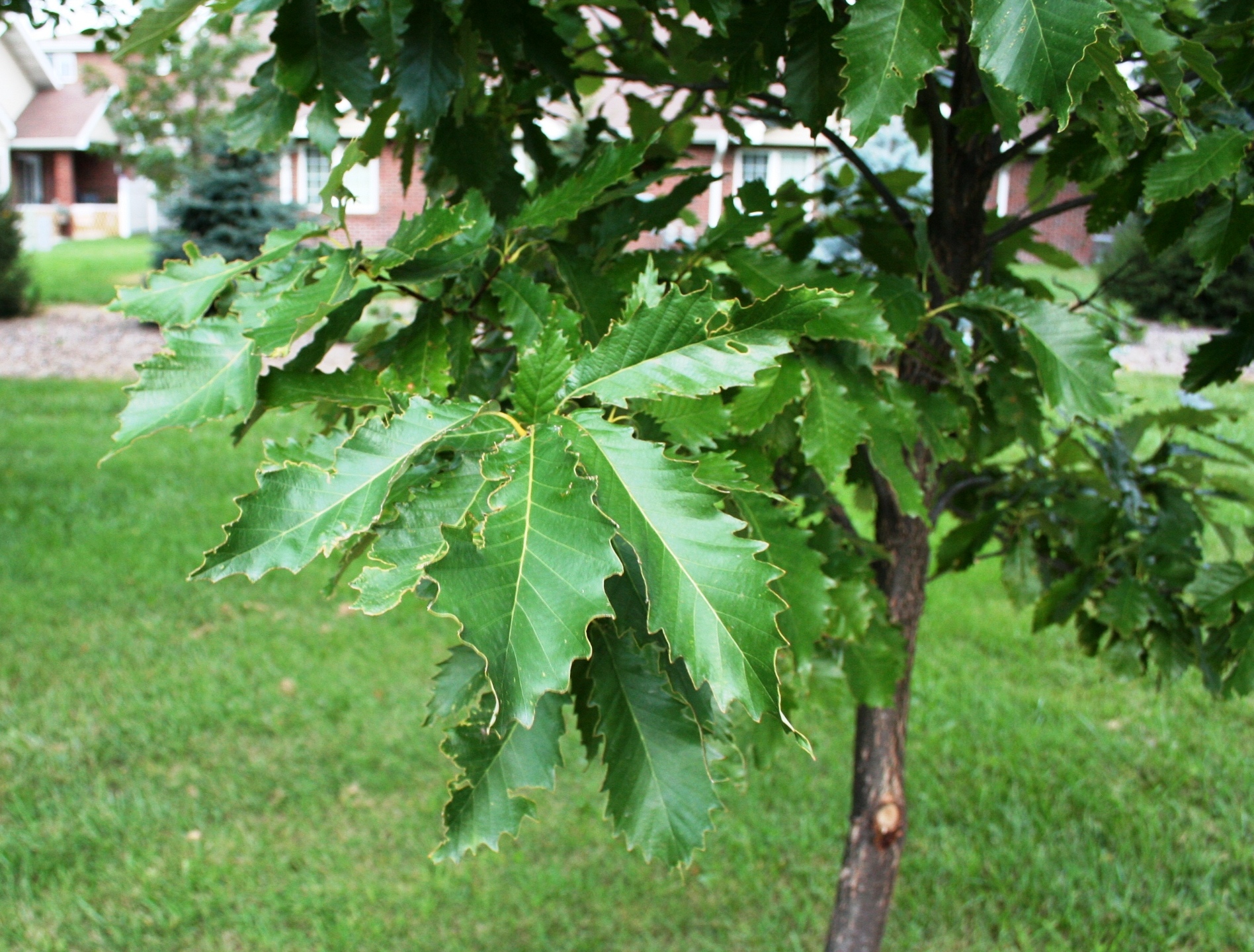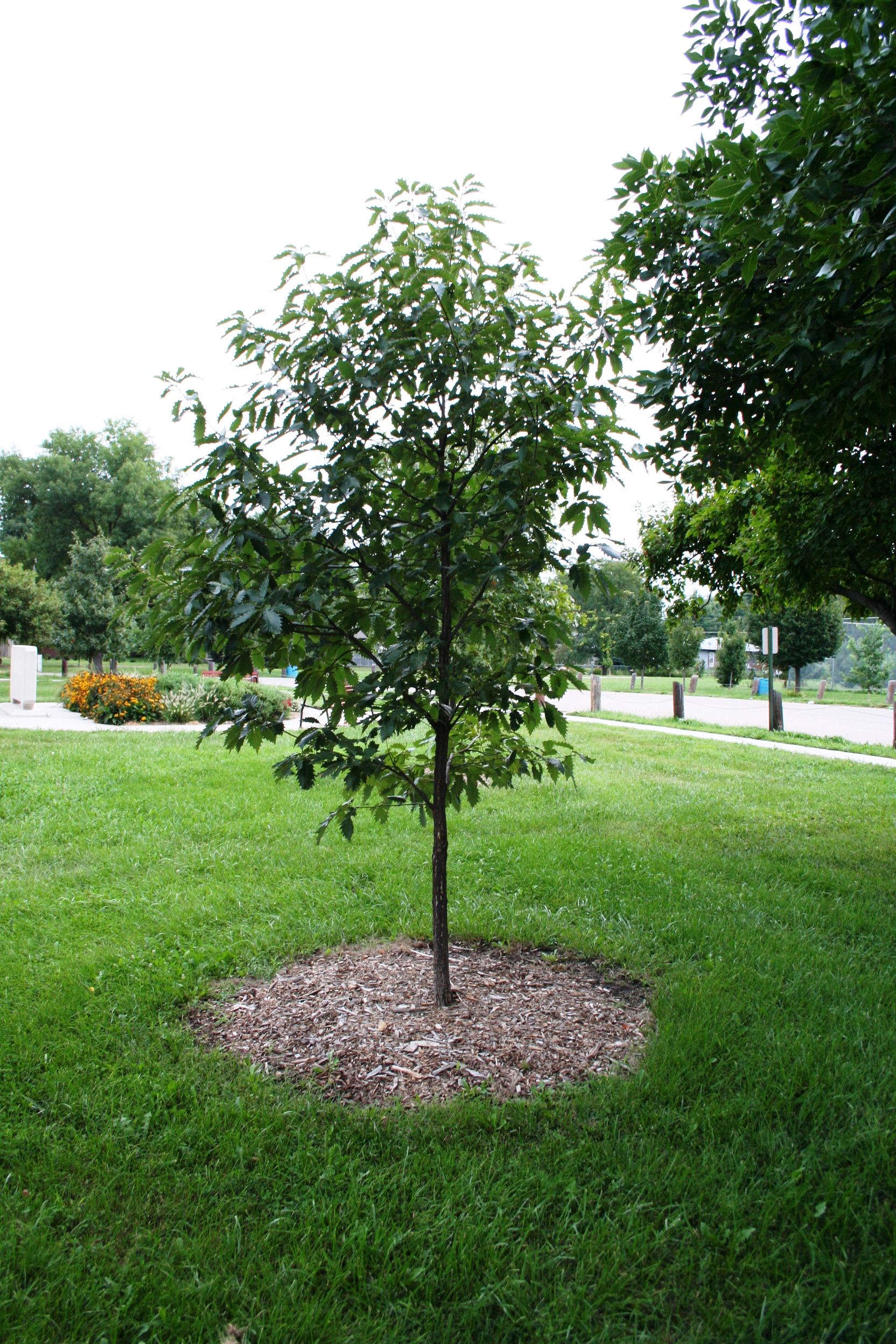Oak, Chinkapin
Quercus muehlenbergii, Deciduous
Next to bur oak, chinkapin oak is the second most adaptable white oak that can be grown in Nebraska. It has a wide geographic distribution occurring naturally from Mexico to southern Canada and is native to the southeast part of Nebraska.

Where To Grow

Size at Maturity
| Tree Height | Tree Spread |
| 40-60' | 40-50' |
Tree Characteristics
The common name ‘chinkapin’ is actually an alternative common name for chestnut which refers to this tree’s chestnut-like leaves that are rather narrow and broadly serrated. Chinkapin oak has a distinctive flaky, gray-yellowish bark as it matures, leading to one of its other common names—the yellow oak.
Wildlife Benefits
Squirrels, chipmunks, opossums, white-tailed deer, blue jays, woodpeckers and other birds consume chinkapin nuts. White-tailed deer browse the foliage.
Additional Considerations
Similar species tree collectors could try are the dwarf chinkapin and chestnut oaks.
Interesting Facts
The Cherokee Indians used dried leaves as washes to alleviate headaches, fevers, chills, cold sweats, and fever blisters. The Koasati Indians used the roots of chinkapin as a decoction for stomachaches.
References
- Tips for planting success
- NRCS Plant Guide
- Developed by Justin Evertson, Kyle Martens, and Denise Wally

